This article introduces the distinctive features of traditional crafts from Japan’s Tohoku region. The artisanal products of Tohoku, meticulously handcrafted by generations of skilled craftsmen, beautifully blend practicality with artistic expression.
These regional crafts, born from local aesthetics and techniques, have garnered high acclaim both within Japan and internationally. We’ll explore the allure of these crafts, highlighting representative products from each area.
Table of Contents
What Makes Tohoku’s Traditional Crafts Special?
The Tohoku region, steeped in Japan’s traditional culture, has nurtured a variety of crafts throughout its long history. The area’s rich natural environment and harsh climate have shaped unique local techniques and aesthetic sensibilities, which are reflected in these crafts.
A key characteristic is the use of natural materials and a focus on handcrafted quality. Tohoku’s crafts often seamlessly merge functionality with beauty, ranging from everyday utensils to decorative items.
These crafts, deeply rooted in local landscapes and cultures, continue to be passed down through generations of artisans, preserving time-honored techniques and traditions.
Aomori Prefecture’s Signature Traditional Crafts
Aomori Prefecture has developed a unique craft culture typical of Japan’s northern regions. It boasts nationally acclaimed traditional crafts such as Tsugaru Lacquerware and Tsugaru Vidro glassware. These crafts showcase the exceptional skills of local artisans and reflect Aomori’s natural beauty and rich history.
Let’s take a closer look at Tsugaru Lacquerware and Tsugaru Vidro.
Tsugaru Lacquerware
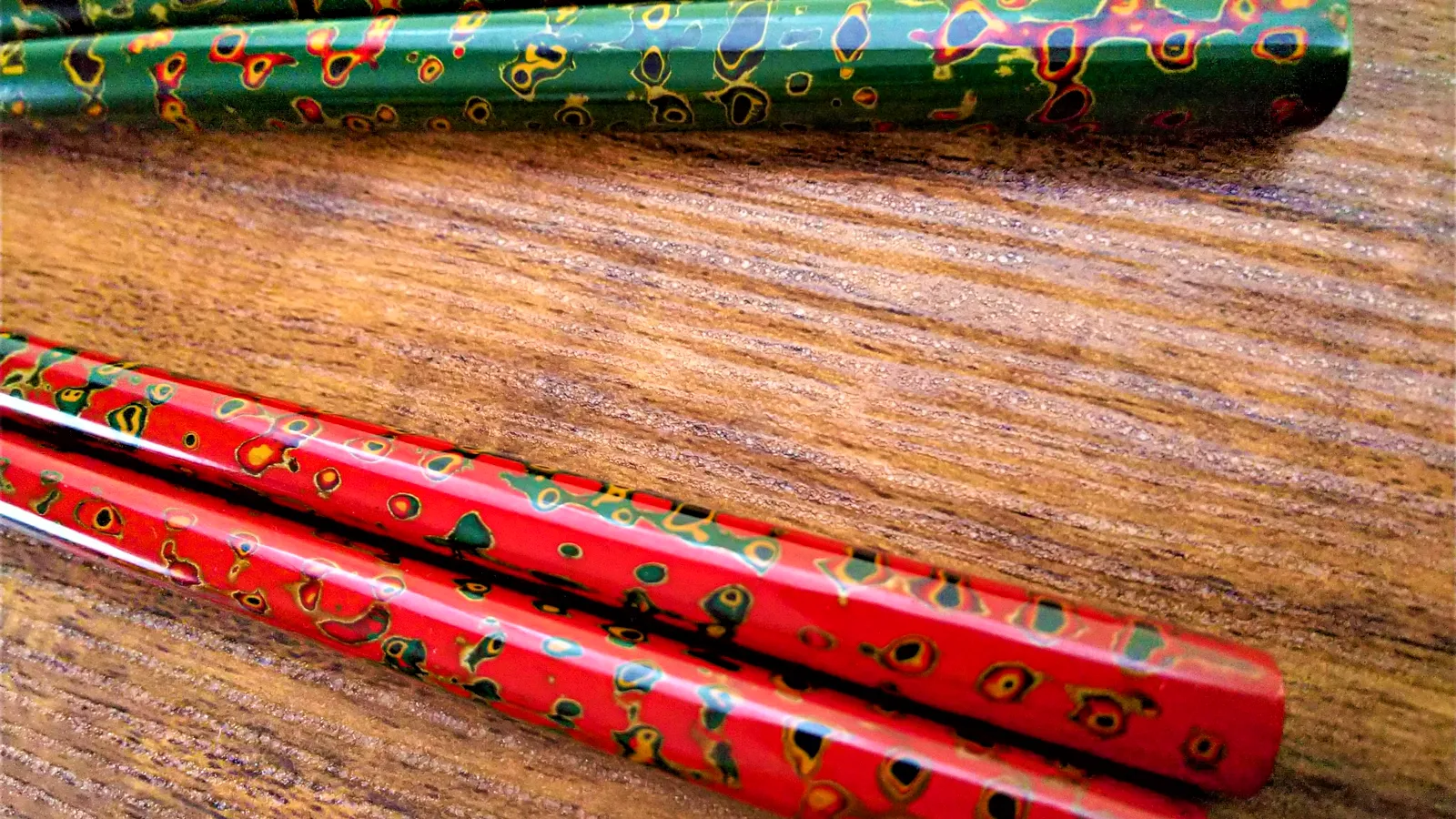
Tsugaru Lacquerware, developed in Aomori’s Tsugaru region, is a renowned Japanese lacquerware with a 300-year history. It’s particularly famous for techniques like “Nanako-nuri” and “Kara-nuri,” which require highly skilled craftsmanship and intricate handwork.
Tsugaru Lacquerware is widely used for practical items like tableware, chopsticks, and tea ceremony utensils, making it a beloved part of everyday life. Its durability is highly valued, and the warm texture that develops with use adds to its charm.
Tsugaru Vidro
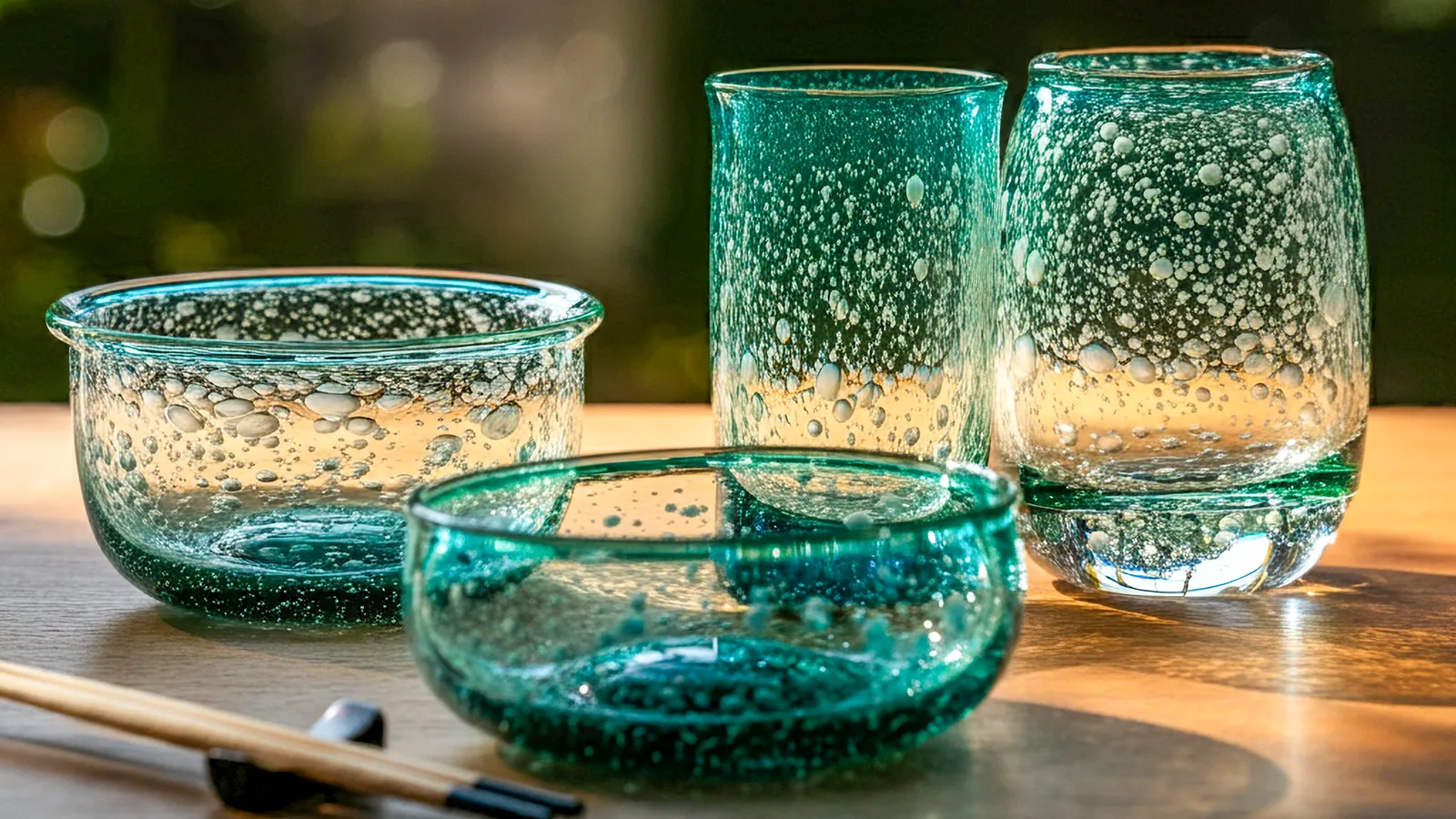
Tsugaru Vidro is a glass craft originating from Aomori Prefecture, known for its beautiful colors and transparency. It evolved from techniques used to create glass floats for fishing nets and gained popularity during the Showa era.
The most distinctive feature of Tsugaru Vidro is that each piece is unique, hand-blown by skilled artisans. The vibrant glass creations often reflect Aomori’s rich natural landscapes, particularly the colors of the sea, sky, and mountains throughout the seasons.
Tsugaru Vidro is not only beautiful but also practical, popular as glassware and vase decor. With seasonal limited colors and new designs constantly emerging, it’s a craft that honors tradition while continually evolving.
Iwate Prefecture’s Notable Traditional Crafts
Iwate Prefecture is home to many traditional crafts with advanced techniques passed down through generations. Particularly well-known are Nambu Ironware and Hidehira Lacquerware. These crafts, created by skilled artisans, are highly regarded both in Japan and overseas for their quality and beauty.
Let’s explore the characteristics of Nambu Ironware and Hidehira Lacquerware.
Nambu Ironware

Nambu Ironware is a traditional cast iron craft produced in Morioka City and Oshu City, Iwate Prefecture. Its history dates back to the Edo period when the local feudal lord promoted the tea ceremony. Made primarily from pig iron, Nambu Ironware is famous for its teakettles and tea pots. Known for its durability and ability to distribute heat evenly, it’s prized for bringing out the best flavor in tea leaves.
In recent years, Nambu Ironware has incorporated modern designs, gaining popularity overseas. Its jet-black luster and substantial design beautifully fuse traditional and contemporary aesthetics.
Hidehira Lacquerware
Hidehira Lacquerware traces its origins to the Heian period when the Oshu Fujiwara clan flourished in Hiraizumi. It’s named after Fujiwara no Hidehira, who invited craftsmen from Kyoto to promote lacquerware in Hiraizumi.
The hallmark of Hidehira Lacquerware is the lavish use of gold leaf in the “Hidehira bowl” design, featuring black and vermilion lacquer adorned with gold decorations. This embellishment creates a luxurious yet elegant beauty.
Hidehira Lacquerware is notable for its entirely handcrafted process, from wood base creation to multiple lacquer layers and gold leaf decoration, resulting in a durable finish. Today, it’s popular not only for everyday use but also as special gifts, and has been used in royal and international settings.
Akita Prefecture’s Distinctive Traditional Crafts
Akita Prefecture is renowned for its numerous traditional crafts rooted in rich nature and history. Among these, Odate Magewappa and Kabazaiku are particularly famous, with techniques refined over a long history still being passed down today.
Let’s explore the characteristics of Odate Magewappa and Kabazaiku.
Odate Magewappa
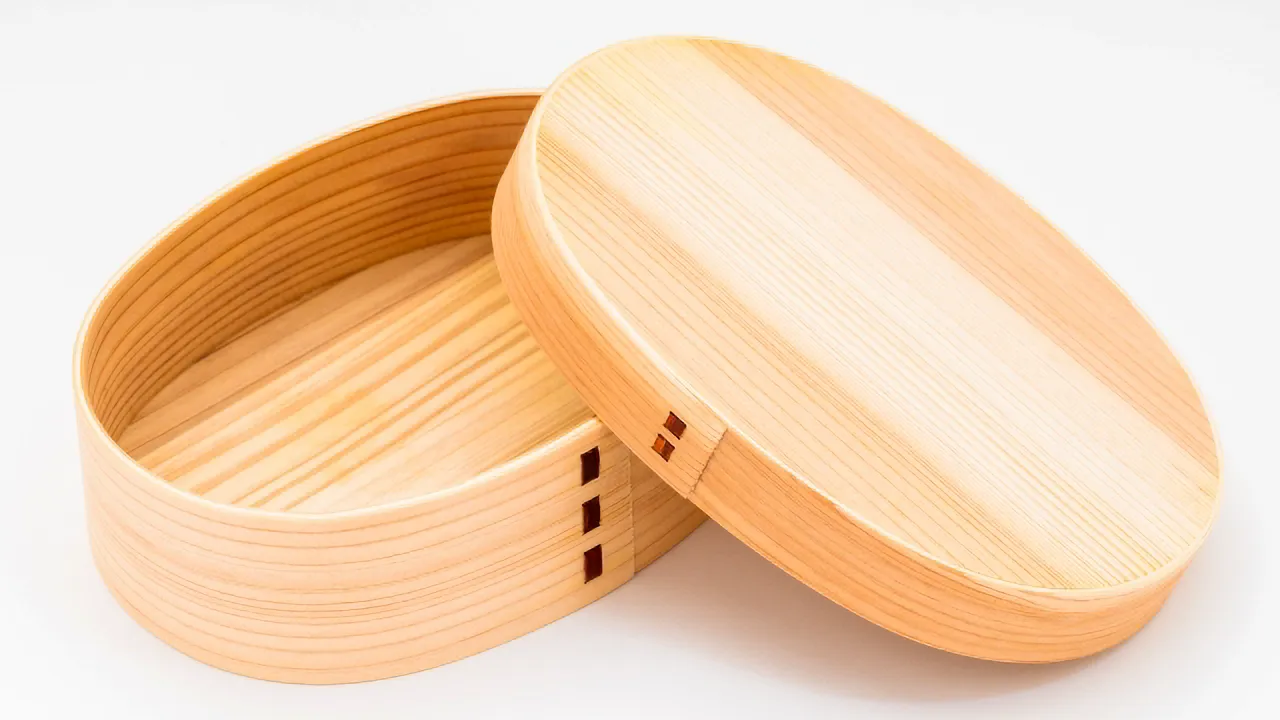
Odate Magewappa is a type of bentwood ware made using Akita cedar, primarily produced in Odate City. Its origins date back to the Edo period when the local lord encouraged lower-ranking samurai to craft bentwood items. The unique technique involves boiling thin wood strips to bend them, then securing them with cherry bark in a process called “kaba-nui.” Lightweight and durable, Odate Magewappa showcases the beautiful grain and aroma of Akita cedar.
Odate Magewappa is popular as traditional lunchboxes due to its excellent food preservation properties. Being a natural product, it requires careful maintenance, including protection from direct sunlight and high temperatures.
Kabazaiku
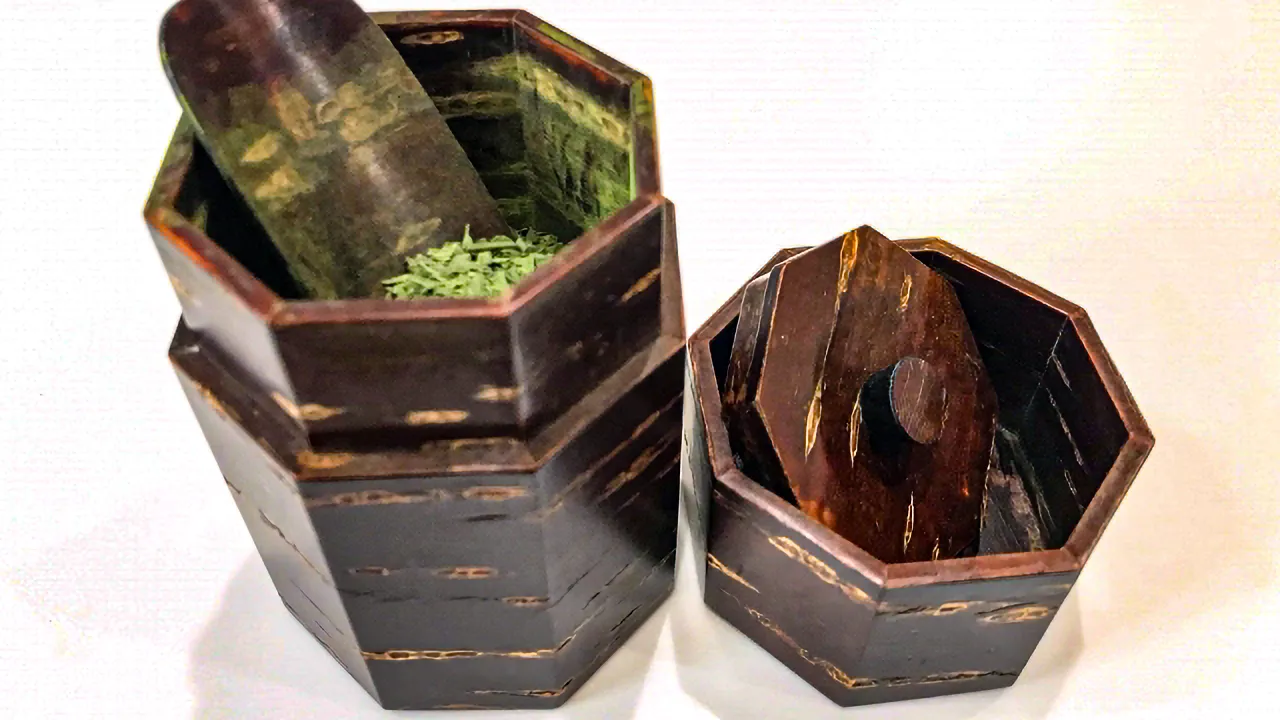
Kabazaiku is a traditional craft from Kakunodate, Semboku City, Akita Prefecture, using cherry tree bark to create wooden items. Originating in the early 18th century in Kakunodate, it’s used to make products like tea caddies, inro (small cases), and brooches. The process involves adhering cherry bark to a wooden base and polishing it to create a unique luster. Tea caddies are particularly prized for their moisture-resistant properties, ideal for tea leaf storage.
Kabazaiku is characterized by the delicate patterns and natural texture of the cherry bark, symbolizing the cultural heritage of Kakunodate alongside its famous cherry blossom trees. Recently, it has expanded into international markets, evolving as a craft that harmonizes tradition with modern demand.
Miyagi Prefecture’s Renowned Traditional Crafts
Miyagi Prefecture boasts numerous traditional crafts with historical backgrounds and unique techniques. Among these, Traditional Kokeshi Dolls and Tamamushi Lacquerware are particularly well-known.
Let’s explore the characteristics of Traditional Kokeshi Dolls and Tamamushi Lacquerware.
Traditional Kokeshi Dolls
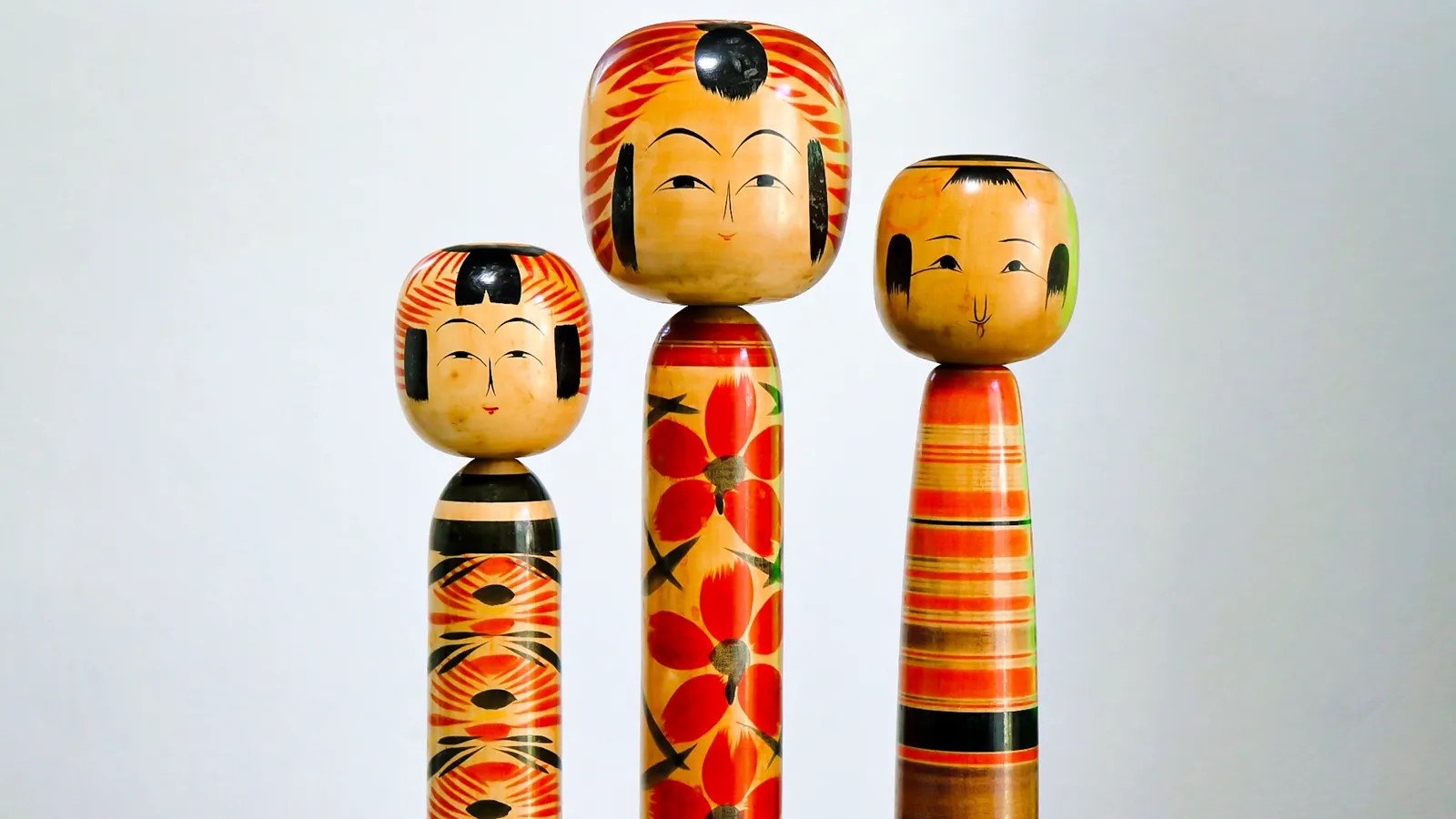
Miyagi’s Traditional Kokeshi Dolls are a type of wooden doll made throughout the Tohoku region. There are five main styles: Naruko, Togatta, Yajiro, Sakunami, and Hijiori. Each style has its unique characteristics. For example, Naruko Kokeshi dolls have a straight body with lathe markings and make a squeaking sound when the head is turned.
Kokeshi dolls originated as souvenirs in Tohoku’s hot spring towns during the late Edo period. Today, they’re appreciated as art pieces for their beauty and form. Crafted from wood like dogwood, they’re shaped on a lathe and hand-painted. The techniques and designs vary by region, making them popular among collectors.
Tamamushi Lacquerware
Tamamushi Lacquerware is a traditional lacquerware created in Sendai City, Miyagi Prefecture, developed in the 1930s. Its most distinctive feature is the unique luster and color resembling a jewel beetle’s wings, achieved by sprinkling silver or aluminum powder and applying layers of transparent lacquer.
Patented in 1935, Tamamushi Lacquerware has since grown into a specialty product of Miyagi Prefecture. Today, it’s used for gifts and commemorative items, with a wide range of products including vases, confectionery containers, and document boxes.
As a result, Tamamushi Lacquerware has become one of Miyagi Prefecture’s representative crafts, highly valued both in Japan and abroad.
Yamagata Prefecture’s Celebrated Traditional Crafts
Yamagata Prefecture has developed a craft culture supported by its rich nature and history. Among its crafts, Tendo Shogi Pieces and Uesugi Silk Fabric are especially renowned for their high level of skill and beauty, appreciated both domestically and internationally.
Here, we’ll introduce the characteristics of Tendo Shogi Pieces and Uesugi Silk Fabric, representative traditional crafts of Yamagata Prefecture.
Tendo Shogi Pieces

“Tendo Shogi Pieces,” made in Tendo City, are said to have originated in the late Edo period when the Oda clan encouraged their retainers to produce shogi pieces as part of a financial reconstruction strategy. After the Meiji period, a division of labor system was established, particularly separating the woodworking process from the character writing on the pieces.
Tendo Shogi Pieces range from mass-produced “pressed pieces” to “carved pieces” individually crafted by artisans, and “raised pieces” where characters are raised using lacquer. Handcrafted pieces by master craftsmen are designated as traditional Japanese crafts, playing a crucial role in supporting shogi culture.
Uesugi Silk Fabric
Uesugi Silk Fabric is a traditional textile made in Tsuruoka City, Yamagata Prefecture, and Murakami City, Niigata Prefecture. This fabric is made from the bast fibers extracted from linden tree bark, using techniques that date back to the Jomon period in ancient Japan.
Uesugi Silk Fabric is characterized by its strength and supple texture, used in various products from bags to clothing. The manufacturing process is highly time-consuming, sometimes taking nearly a year from stripping the linden bark to completing the weaving.
This silk fabric, which harnesses the power of nature through a long tradition, continues to be preserved as an important part of the region’s culture.
Fukushima Prefecture’s Distinguished Traditional Crafts
Fukushima Prefecture has developed unique traditional crafts against a backdrop of history and culture. Among these, Aizu Lacquerware and Ōborisōma Ware are particularly famous crafts.
Let’s explore the characteristics of Aizu Lacquerware and Ōborisōma Ware.
Aizu Lacquerware
Aizu Lacquerware, produced in the Aizu region of Fukushima Prefecture, has a history spanning over 400 years. It’s characterized by its durability and beautiful decorations. Decorative techniques such as “maki-e” and “chinkin” are used, with “Aizu-e” designs featuring luxurious patterns using gold and colored powders being particularly distinctive.
In the lacquering process, a unique method called “hana-nuri” is employed, resulting in a natural gloss and soft finish. This versatility allows for a wide range of products, from everyday tableware and furniture to decorative items, ensuring Aizu Lacquerware remains beloved by many people today.
Ōborisōma Ware
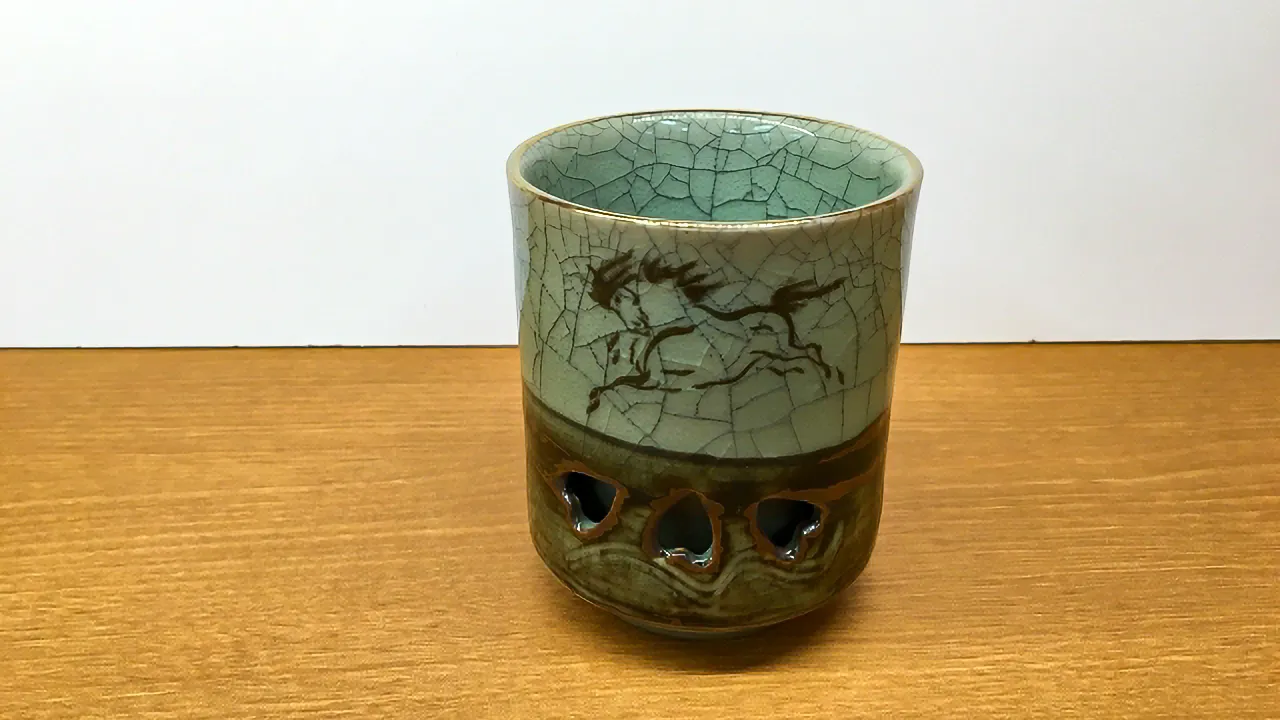
Ōborisōma Ware is a traditional pottery produced in Namie Town, Fukushima Prefecture, with its kiln established in 1690. Its most distinctive features are the “blue cracks” (hairline cracks) that spread across the entire piece and the “running horse” design. These cracks, known as “crazing,” occur naturally due to temperature differences after glazing, creating a unique beauty and rustic texture.
Ōborisōma Ware is also famous for its “double-firing” technique, which enhances heat retention by creating a double-layered structure. Today, young artisans are incorporating new technologies to create pieces that suit contemporary lifestyles.
Conclusion: Experiencing Japanese Beauty Through Tohoku’s Traditional Crafts
The Tohoku region is a treasure trove of various traditional crafts nurtured in its rich natural environment and long history. Each area has passed down its unique culture and techniques, with their beauty and practicality being highly valued.
The representative crafts we’ve introduced are:
- Tsugaru Lacquerware (Aomori)
- Tsugaru Vidro (Aomori)
- Nambu Ironware (Iwate)
- Hidehira Lacquerware (Iwate)
- Odate Magewappa (Akita)
- Kabazaiku (Akita)
- Traditional Kokeshi Dolls (Miyagi)
- Tamamushi Lacquerware (Miyagi)
- Tendo Shogi Pieces (Yamagata)
- Uesugi Silk Fabric (Yamagata)
- Aizu Lacquerware (Fukushima)
- Ōborisōma Ware (Fukushima)
Tohoku’s traditional crafts embody Japanese aesthetics through handcrafted work while coexisting with nature. These works truly represent Japanese culture, loved across time and generations.


